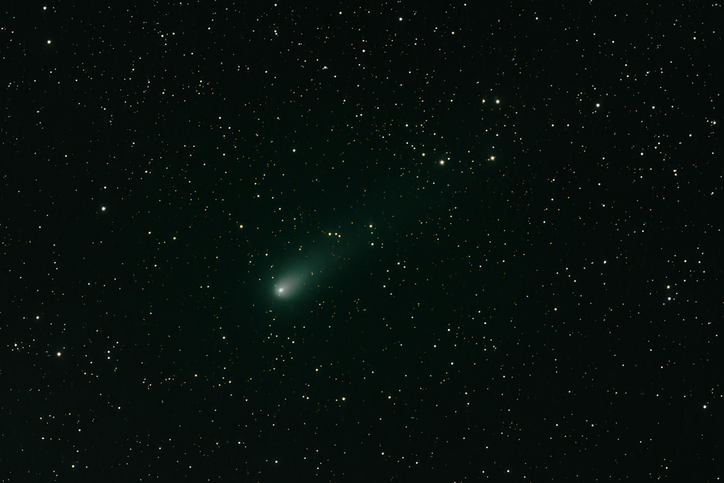3 min
Expert Q & A: Florida Tech's Csaba Palotai talks about the green comet's return after 50,000 years away
Looking to the skies over the next week or so, you may see something you will not see again for 50,000 years. This occasional visitor, C/2022 E3 (ZTF), also known the “green comet,” will make its closest approach to Earth Feb. 2. We asked Csaba Palotai, aerospace, physics and space sciences associate professor, and Amelia Brumfield, graduate research assistant, about the green comet, what we can learn from it, where to look for it and more. Q: Why is this comet green? Palotai: The composition of a particular comet determines what the color is. This one has most likely diatomic carbon in it, and then that carbon comes out and interacts with the sunlight. Certain photochemical processes take place and that gives it the green color. This is not for every comet. Q: Why haven’t we seen this comet in 50,000 years? Brumfield: It has a very eccentric orbit. Our orbit, we go around the sun every year, but this comet, its orbit is on a scale of thousands and thousands of years. There's a chance that no one's ever seen it. Dr. Palotai had mentioned that it might have come by during the ice age. It might not even have passed by Earth (to be visible) at that time, if it did. So, it won't be back and if it does even come back, we're going to be long gone. It's just a cool chance to see something that maybe no one's ever seen before and might never ever get to see again. What can we learn from this comet? Palotai: This comet has an interesting orbit and then people study this orbit after the discovery of the comet. They figure it out that this is coming from a part of the solar system called the Oort Cloud (named for the Dutch astronomer who first described it, Jan Oort). This region of the solar system is not well understood because it is very far from us, so actually we haven't seen any objects in this region. It is thought that there are about, give or take, a trillion icy objects in this region. Some of them are smaller ones, some of them are bigger ones. And the only way we know about these things is that whenever comets like this come from that region. Q: When is a good time to view this comet? Palotai: In the next few days, or maybe in the next couple of weeks or so is the greatest chance to observe it. You need several factors to have a comet to be visible with a naked eye, starting with clear, dark skies. Beyond the naked eye, if you have binoculars or a smaller telescope, you should also be able to see it. Q: Where can you view this comet? Brumfield: You can still see it between the Little Dipper and the Big Dipper, and then around Jan. 30 it should be closer to the North Star, so you can look for it in that area of the sky. And the best time to view it is very late at night, so between midnight and dawn. And then the closest approach is going to be Feb. 2, but that doesn't necessarily mean that's going to be the best time to view it. If you're a reporter covering the green comet, let us help with any of your questions about this rare celestial phenomenon. Csaba Palotai is available to speak with you. Simply click on his icon now to arrange an interview today.



